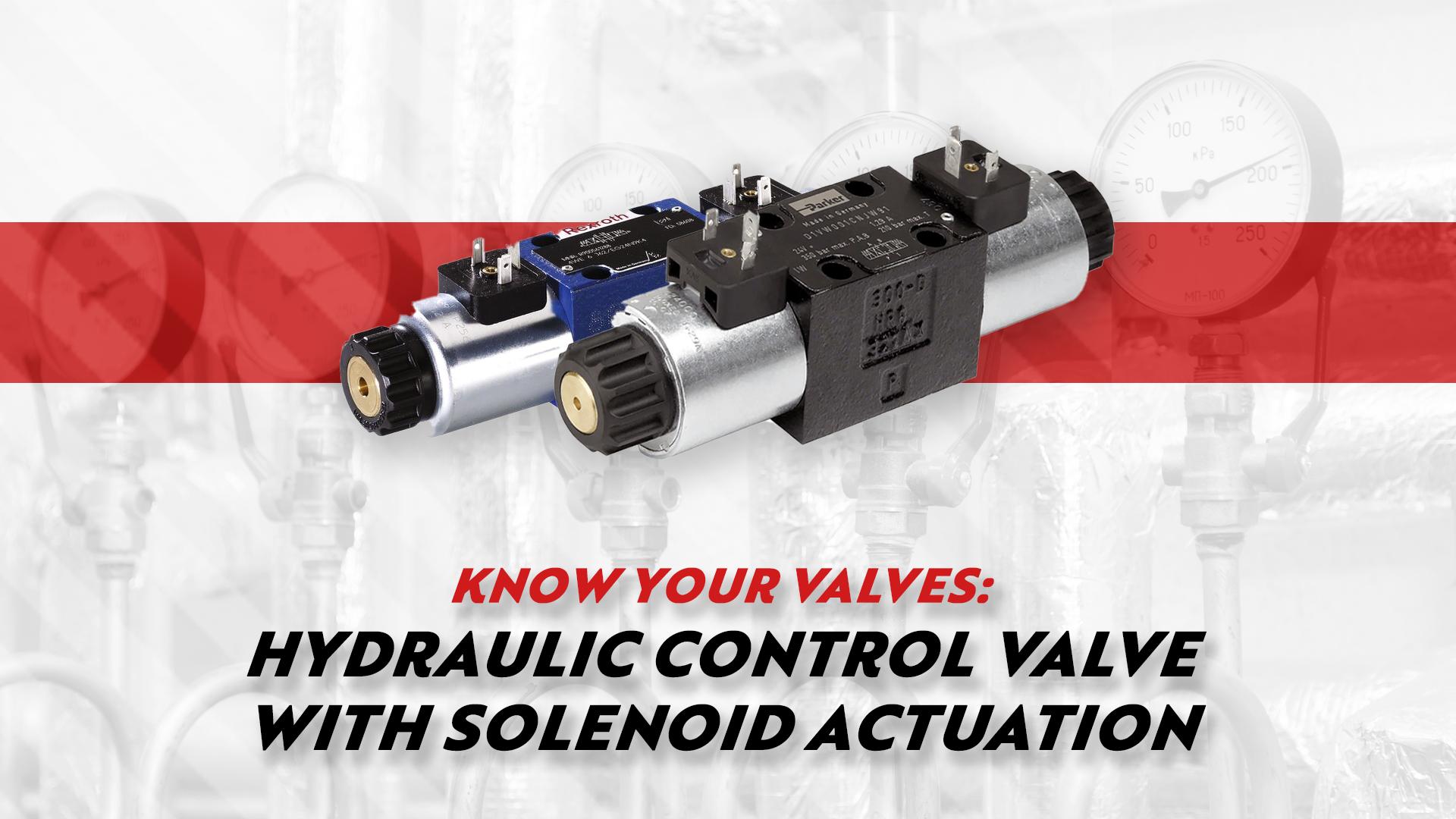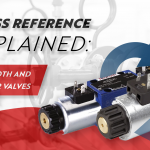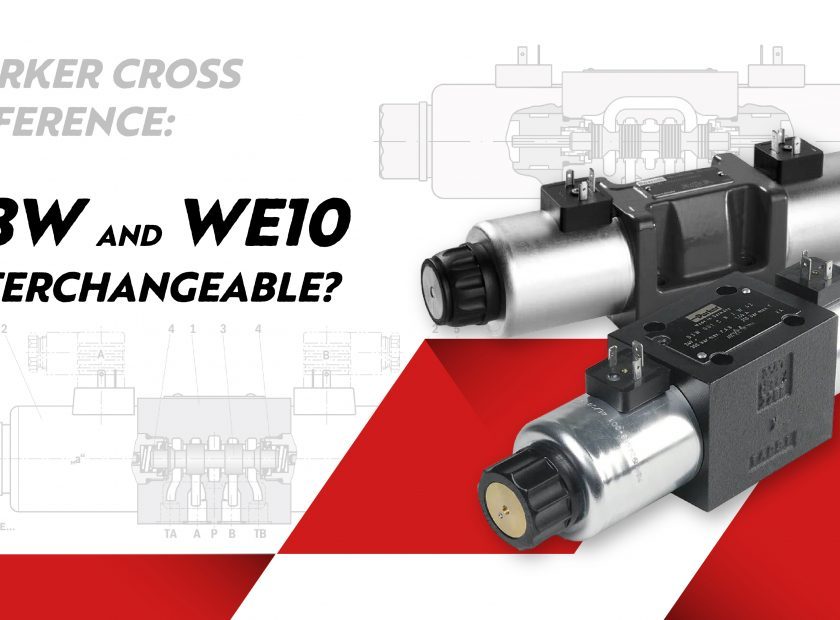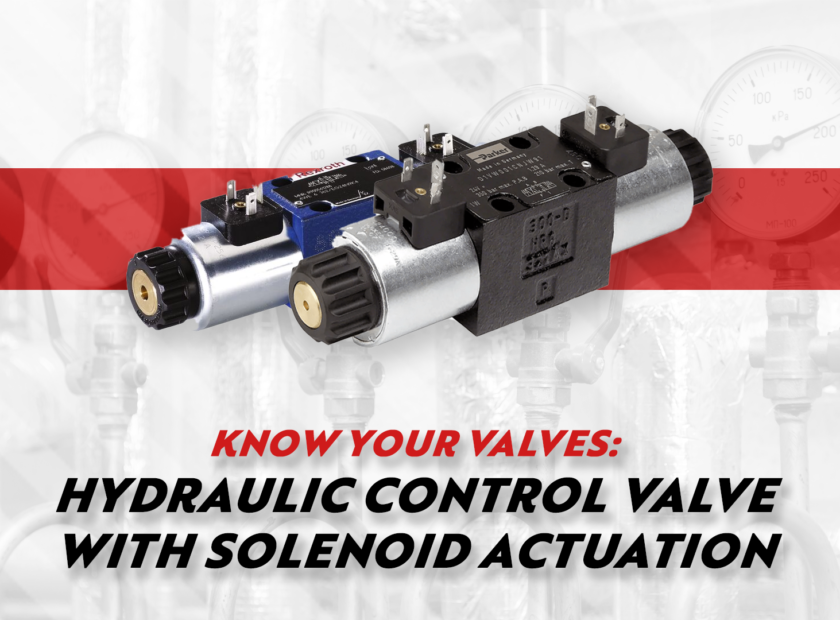
Know Your Valves: Directional Control Valves
A hydraulic direction control valve is a hydraulic component used to control the direction of flow in a hydraulic system. It may be operated manually or through an actuation mechanism involving fluid or solenoid. The later with solenoid-based actuation is the most prevalent in industrial applications.
According to Skinner [1], hydraulic direction control valves are among the most used components in hydraulic circuits. It is, therefore, vital to deepen one’s knowledge in this topic for designing, replacement, and maintenance of hydraulic systems.
Classification
Hydraulic directional control valves are classified based on ports, states, centre configuration, return mechanism, and valve construction.
Ports
Ports are the flow paths to the control valve. Usual port configurations are two, three or four.
States
States are the possible conditions or positions of a control valve. Two-port configurations have only two state states:
- Forward
- Reverse
Whereas, three and four-port configurations have three states:
- Forward
- Stop
- Reverse
Return Mechanism
When the actuator is relaxed, the cylinder either stays in its place due to a detent or returns to an offset position due to a return mechanism. In both these mechanisms, there is a pre-determined location for the spool after de-energization. There is, however, a third valve class in which there is neither a detent nor a spring and, therefore, has no pre-determined location for the spool to rest upon de-energization.
Center Configuration
Center configuration is the flow arrangement when the valve is in a neutral state or both solenoids are de-energized [2]. It may be characterized by a closed centre, open centre, float centre, or tandem centre.
Valve construction
The valve may be of poppet type, sliding-spool type, or rotary-spool type. Most modern hydraulic feature sliding-spool type valve construction.
Commonly used Directional Valves
To better understand these terminologies, let us go through the commonly used and interchangeable directional valve with solenoid actuation of Bosch Rexroth (R900561282) and Parker Hannifin (D1VW008CNJW).
Bosch Rexroth [3] | Parker Hannifin [4] | ||
R900561282 (4WE6G6X/EG24N9K4) | D1VW008CNJW | ||
Code | Interpretation | Code | Interpretation |
4 | 4 ports | D | Directional Valve |
WE | Directional Valve | 1 | Size DIN NG06/ CETOP 03/ NFPA D03 |
6 | Size 6 | V | 3-chamber valve |
G | | W | Wet pin armature solenoid |
6X | Series | 008 | |
G24 | DC 24V | C | |
N9 | With concealed manual override | N | NBR Seal |
K4 | Without mating connector, with connector according to DIN EN 175301-803 | J | DC 24 V |
W | Solenoid connector as per EN 175301-803 | ||
While the part numbers and designation codes were different, both directional control valves seem similar from the interpretation of their designation system. From the table, it may seem that Bosch Rexroth’s R900561282 is lacking spring return when compared to Parker’s D1VW008CNJW, however, Bosch Rexroth’s uses spring return as default and does not include code for that [3]. The same applies to sealing and wet pin armature. Thus, the two-directional valves are almost identical.
What’s best for you?
In general, hydraulic systems vary with application. There is never a one-size-fits-all system in hydraulics. The same is true for hydraulic directional control valves with solenoid actuation. While one system may be working well with Bosch’s R900561282, another system might need a directional control valve with different flow configuration. Similarly, there are other conditions to look out for like:
- Pressure rating
- Flow rating
- Mounting arrangement
- Safety consideration
- Contamination sensitivity
- Internal leakage
You may go through various catalogues of hydraulic directional control valves with actuation to find the right fit for your application. Alternatively, you may feel free to contact our team at [insert link]. Our experienced hydraulic engineers would love to help you choose the right valve for your system.
References
[1] S. Skinner, “A guide to selecting a manual hydraulic directional control valve.”
[2] Vektek, “Directional Control Valves,” no. July, pp. 1–15, 2020.
[3] Rexroth Bosch Group, “Directional spool valves, direct operated, with solenoid actuation,” pp. 1–12, 2013.
[4] Parker Hannifin Corporation, “Directional Control Valve Series D1VW,” vol. 1. pp. 5–12, 2018.





